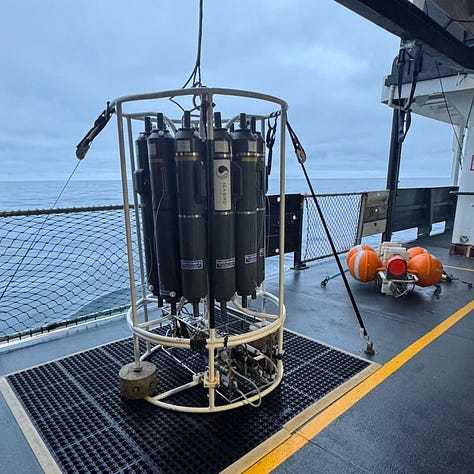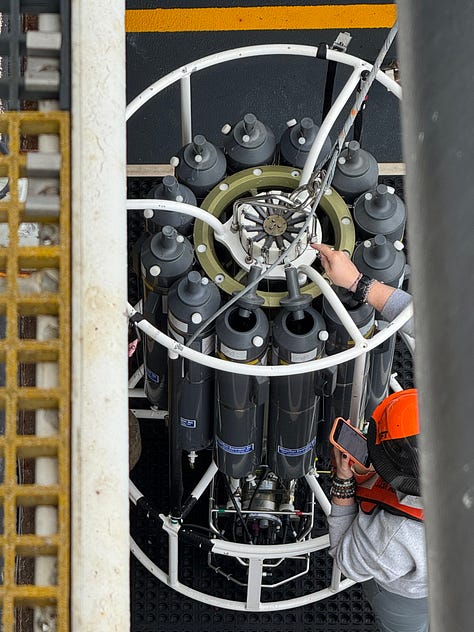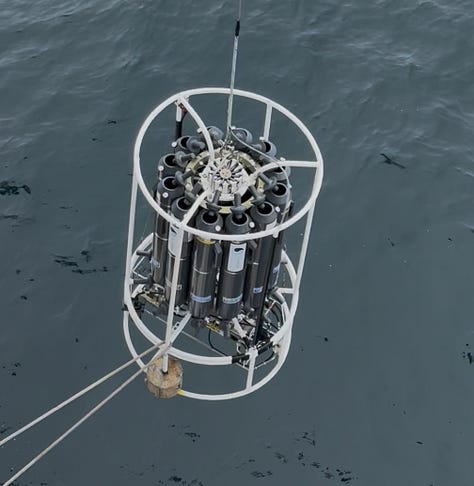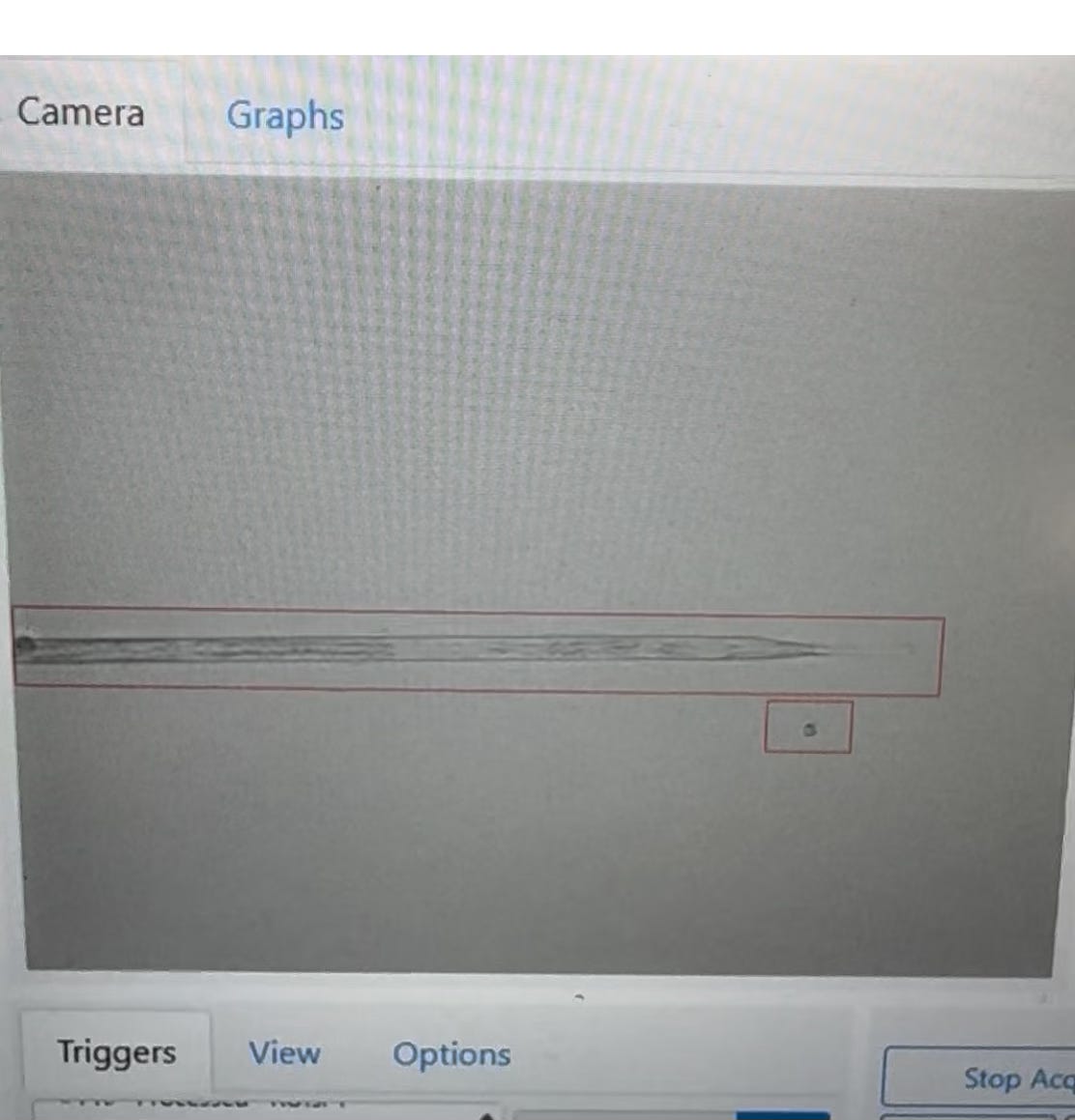Before we do any of our fish trawls we do a marine mammal watch and if any are spotted near the ship, we will wait for them to leave, or more on to a different spot if they are sticking around. We do this to avoid them accidentally getting caught in the nets. We do this even for our night trawls, and while it is harder to see at night, once your eyes adjust to the darkness it is possible to spot things in the water if you look carefully enough. They only illuminate the bridge with red light at night, which maximizes our ability to see at night, and when we go up there we bring redlight flashlights with us.
When I was doing marine mammal watch tonight it was pretty foggy, but the seas were calm and we did spot several sea lions playing around the ship, so we moved to a different position. We were fairly close to shore (a few miles) when we saw the sea lions, and I also spotted a bat swooping over the waves. According to one of the crew there is a large colony of bats in an abandoned structure on land close to where we were. There was also a barn owl that kept circling around the boat trying to land! Because it was so foggy the ship had its (very loud) fog alarm going off every few minutes, which kept scaring the owl off. It would approach, and got quite close to us on multiple occasions, and looked like it was about to land and then the fog horn would go off and it would retreat.
There are actually three separate data collection processes going on as part of this survey - fishing for hake via the daytime mid-depth trawl, fishing for CPS via the nighttime surface trawl and water collection for eDNA. I’ve been mostly writing about the fishy projects, so I thought it’s time to write about some of the more oceanographic measurements. Environmental DNA, or eDNA, samples all the DNA found in an environmental sample, which for oceanography is a water sample. The eDNA method being used on this survey will be analyzed to estimate the amount of hake, sardine and anchovies in the area where the water sample was collected. This data will be compared to the data we are collecting with the fish hauls as well as with the acoustic signals.
While eDNA is a relatively new technique, the method of getting the water samples used for the eDNA sampling has been used by oceanographers for decades. The workhorse equipment for oceanographers is the CTD, which stands for Conductivity (from which salinity is derived), Temperature and Depth. The CTD sensor itself it fairly compact, but it’s usually attached to a much larger contraption called the rosette, which is a metal frame that holds a circle of Niskin bottles that collect water samples at various depths. The two ends of the Niskin bottles are connected, and when cocked open are under tension. When the CTD is at the desired depth for a water sample, an electronic signal is sent from the ship that releases the tension and trips the bottle shut, capturing a sample of water at that position. When back on board that water is collected from the closed Niskins, and depending on what measurements are desired, the samples are either be analyzed at sea or brought back to shore to be analyzed there. The samples for eDNA are being filtered out here, and the actual analyses will be done in a lab back on land.



There are some other state-of-the art data being collected as part of the survey. The ship has an underway system that surface water streams through as the ship is moving and continuously measures the salinity and temperature of the water. Those our standard measurements made by oceanographic ships, but on this survey we have a special sensor hooked up to the underway water sampling that takes images of the phytoplankton in the water! It’s called an Imaging FlowCytobot (IFCB) or just Ctyobot. Below is a screen shot showing an image of a two different phytoplankton from the IFCB.
It continues to be foggy out here, so not a lot of sunrise or sunset photo opportunities. While the gray/blue seascape might seem monotonous to some I never get tired of looking at it.
If you want to hear another perspective about the cruise, we have a teacher onboard as part of NOAA’s “Teacher at Sea” program and she is also blogging about the cruise.







Q: Why would they open the water bottle lids before submerging if they wanted samples from way below the surface?
Why not open the bottles when they have reached the desired depth and then close them again after they’re full and then bring them to the surface?